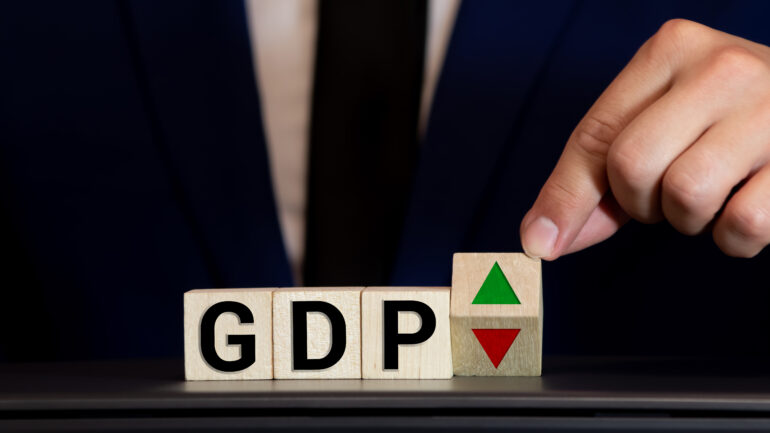Beyond GDP: Rethinking Economic Success

As humanity confronts the intertwined challenges of inequality, climate change, and technological disruption, clinging to GDP as the sole measure of progress is increasingly untenable. A consistent 6-8% GDP growth rate may sound good on the surface, but possibly misses portraying accurate economic success. A more holistic measure is urgent.
In 2019, New Zealand made headlines by adopting a well-being framework for its national budget. Prioritising mental health, child poverty, and environmental protection, the government shifted its focus beyond GDP growth to embrace a more holistic vision of societal progress. Similarly, Costa Rica has demonstrated how sustainability and well-being can coexist with economic development. Consistently ranking high on environmental and happiness indices, thanks to its emphasis on renewable energy and forest conservation, the nation provides a compelling example of an alternative approach to measuring success.
For decades, Gross Domestic Product (GDP) has been the dominant metric for evaluating economic performance. Summing the total value of goods and services produced within a country’s borders, it offers a straightforward snapshot of economic activity.
However, as societies grow more complex and face unprecedented challenges, the limitations of GDP have become increasingly apparent. While it measures economic size, it neglects critical dimensions such as well-being, sustainability, and equity. With the pressing realities of environmental crises, technological upheavals, and rising inequalities, the call to rethink GDP has never been more urgent.
The Origins of GDP and Early Critiques
GDP as a tool was first conceptualised during the Great Depression by economist Simon Kuznets, who presented it as a tool for measuring national income. However, Kuznets himself warned against using GDP as a comprehensive measure of welfare, emphasising that it did not account for non-market activities, inequality, or environmental costs.
The first formal critiques of GDP as a measure of progress emerged in the 1970s. Economists William Nordhaus and James Tobin proposed the “Measure of Economic Welfare” (MEW), which adjusted GDP by accounting for factors like pollution, leisure time, and the depletion of natural resources. The idea was to create a metric that reflected the true costs and benefits of economic activities. This period also saw the publication of the 1987 Brundtland Report on sustainable development, which argued for metrics that incorporated environmental sustainability. Later, the 1990 introduction of the Human Development Index (HDI) by Amartya Sen and Mahbub ul Haq provided a multidimensional framework to measure societal progress beyond GDP.
Some of the major causes around why a new metric was necessary are as follows:
- Focus on Quantity Over Quality: GDP measures output but not whether the production improves lives. It treats all economic activity equally, whether building schools or manufacturing weapons.
- Blind to Inequality: A growing GDP often obscures widening gaps between rich and poor. For instance, rising income inequality can coexist with high GDP growth, leaving large segments of the population behind.
- Environmental Blind Spots: GDP treats resource extraction and pollution as net positives because they contribute to economic activity, ignoring the long-term costs of environmental degradation and climate change.
- Omission of Non-Market Contributions: Activities like caregiving, household work, and volunteerism, which are foundational to societal well-being are excluded from GDP calculations.
- Short-Termism: Emphasising immediate output, GDP often overlooks investments in long-term sustainability and resilience, such as renewable energy and education.
- Neglect of Well-Being: GDP is silent on crucial aspects of life, including health, happiness, and life satisfaction. A rising GDP does not necessarily translate into better living conditions or a happier populace.
Toward a More Comprehensive Framework
Recognising the limitations of GDP, researchers and policymakers have developed several alternative metrics that offer a broader understanding of economic and social progress. These metrics prioritise dimensions like human well-being, sustainability, and innovation, painting a more nuanced picture of national performance.
The Human Development Index (HDI) used widely by the United Nations Development Programme (UNDP), evaluates development by combining three dimensions: life expectancy (health), education (mean and expected years of schooling) and income per capita (standard of living). integrating social and economic factors allows the measure to shift focus from mere output to overall human development. Countries like Norway and Switzerland often rank highly, reflecting their balanced approach to growth and welfare.
Originating in Bhutan, the Gross National Happiness (GNH) index assesses well-being through nine domains, including psychological well-being, cultural preservation, and ecological diversity, emphasising quality of life over material wealth and advocating policies that prioritise happiness and sustainability. It’s a bold reimagining of what progress means in the 21st century.
Also called genuine savings, Adjusted Net Savings (ANS) measures a country’s savings after accounting for investments in human capital, depletion of natural resources, and environmental damage. The metric provides insights into whether a country’s growth trajectory is sustainable – countries reliant on resource extraction may show high GDP growth but negative ANS due to environmental degradation, for example.
Developed by the Social Progress Imperative, a US-based nonprofit, the Social Progress Index evaluates societal progress through dimensions such as basic human needs, foundations of well-being, and opportunities for advancement. Focusing on social outcomes, it highlights areas where governments can improve quality of life, independent of economic output.
The Environmental Performance Index (EPI), Created by experts at Yale and Columbia Universities, ranks countries based on their environmental health and ecosystem vitality, underscoring the importance of sustainability in economic planning, offering a counterbalance to GDP’s environmental blind spots.
Innovation, a key driver of long-term growth, is given primary importance in the Global Innovation Index (GII) tracks countries’ innovation ecosystems, measuring factors like research, patents, and technological outputs. The GII highlights how investments in technology and education can shape future economic landscapes. For instance, nations like South Korea and Switzerland excel due to their robust innovation infrastructures.
Wealth Distribution Metrics like the Gini coefficient and Palma ratio, despite their own drawbacks, measure income inequality offering insights into the distribution of wealth within a society. Integrating such metrics into policymaking can help identify and address disparities that GDP alone obscures.
Challenges in Adopting Alternative Metrics
While the case for moving beyond GDP is compelling, implementing alternative metrics is not without challenges:
- Data Collection and Standardisation: Many alternative metrics require extensive data infrastructure and standardised methodologies, which can be costly and complex to develop.
- Integration into Policy: Policymakers must adapt to using multidimensional metrics for decision-making, which can complicate traditional economic planning.
- Public Perception: GDP’s simplicity makes it appealing to the public and politicians alike. Shifting to nuanced metrics requires educating stakeholders about their benefits.
- Global Comparability: For alternative metrics to gain widespread acceptance, they must be comparable across countries and over time, necessitating international collaboration.
In a world facing multifaceted challenges, clinging to GDP as the sole measure of success is clearly no longer viable. Embracing alternative metrics – well-being, sustainability, and equity – can provide a more nuanced and accurate reflection of progress.


